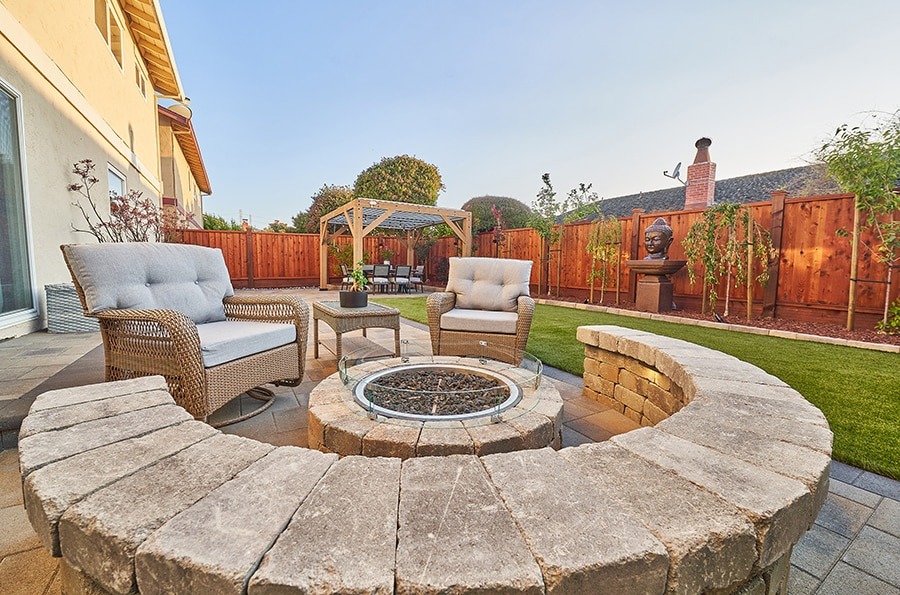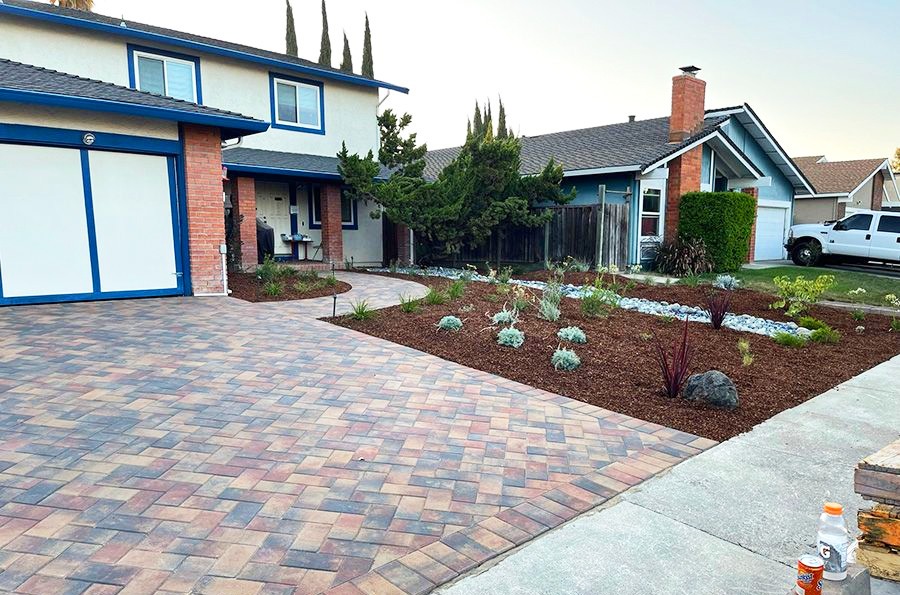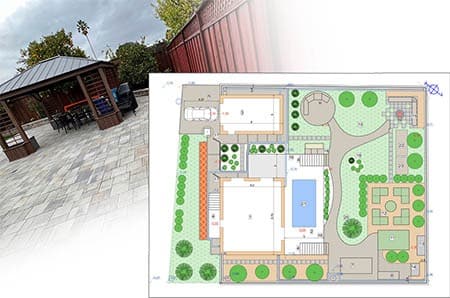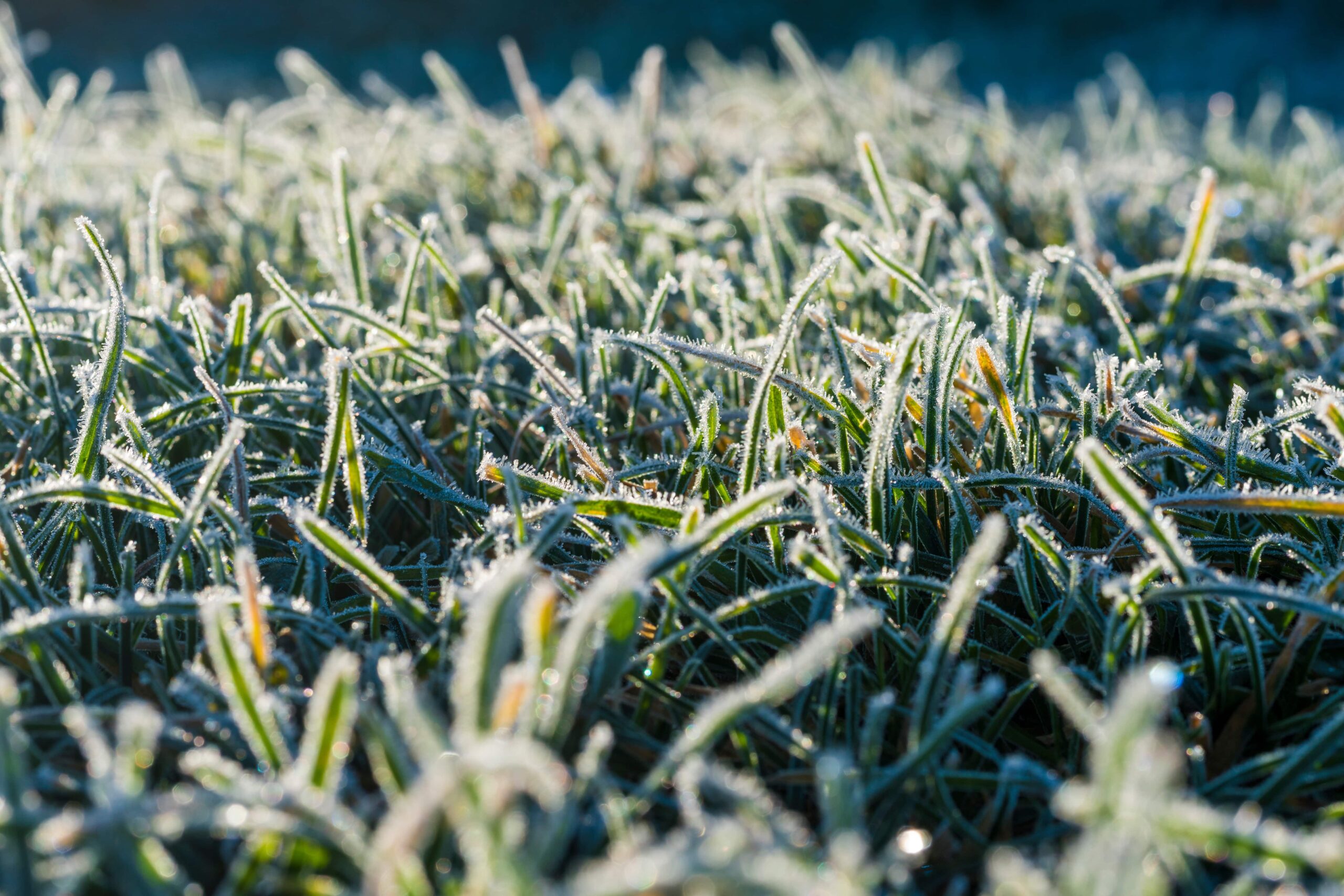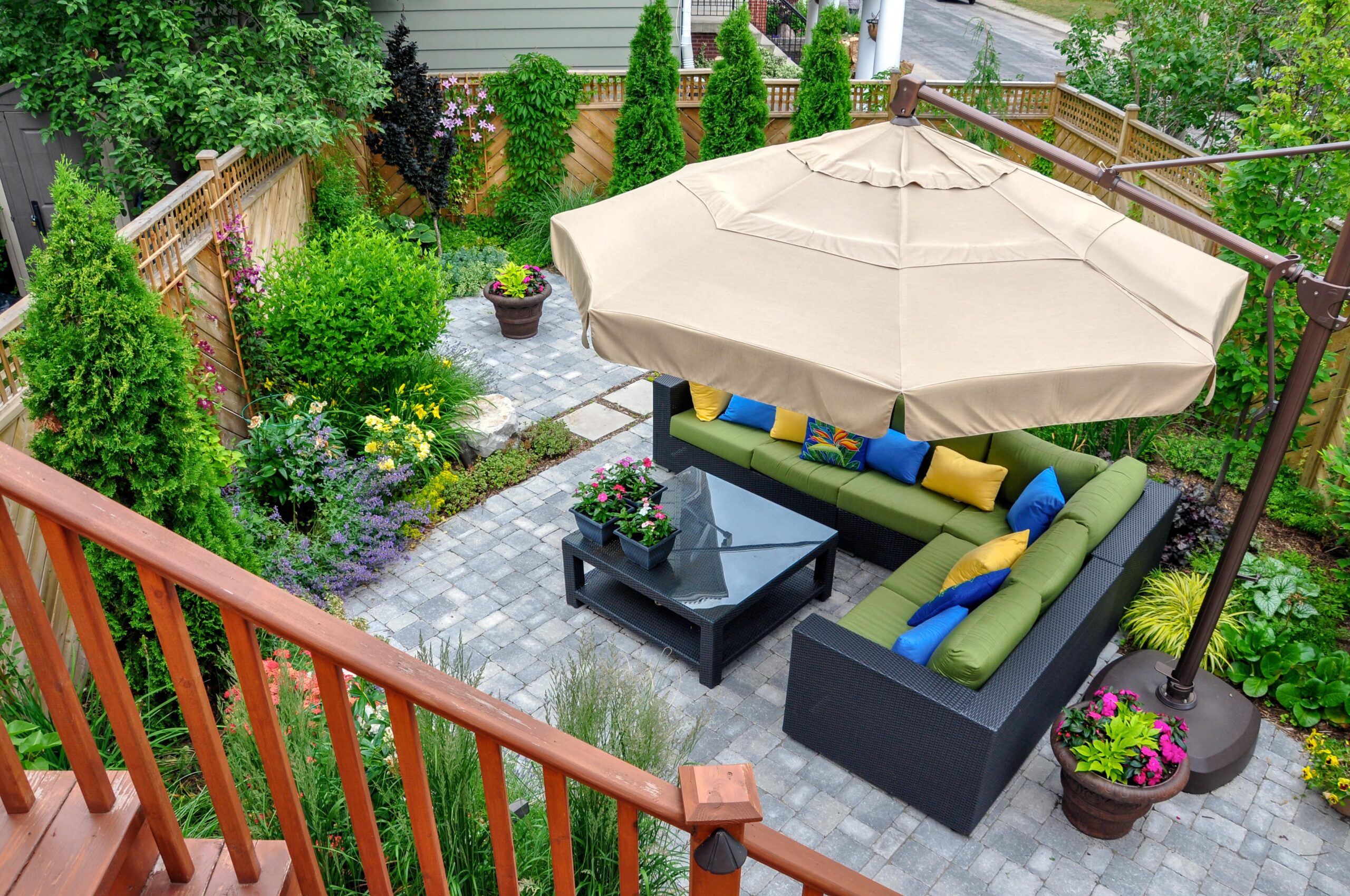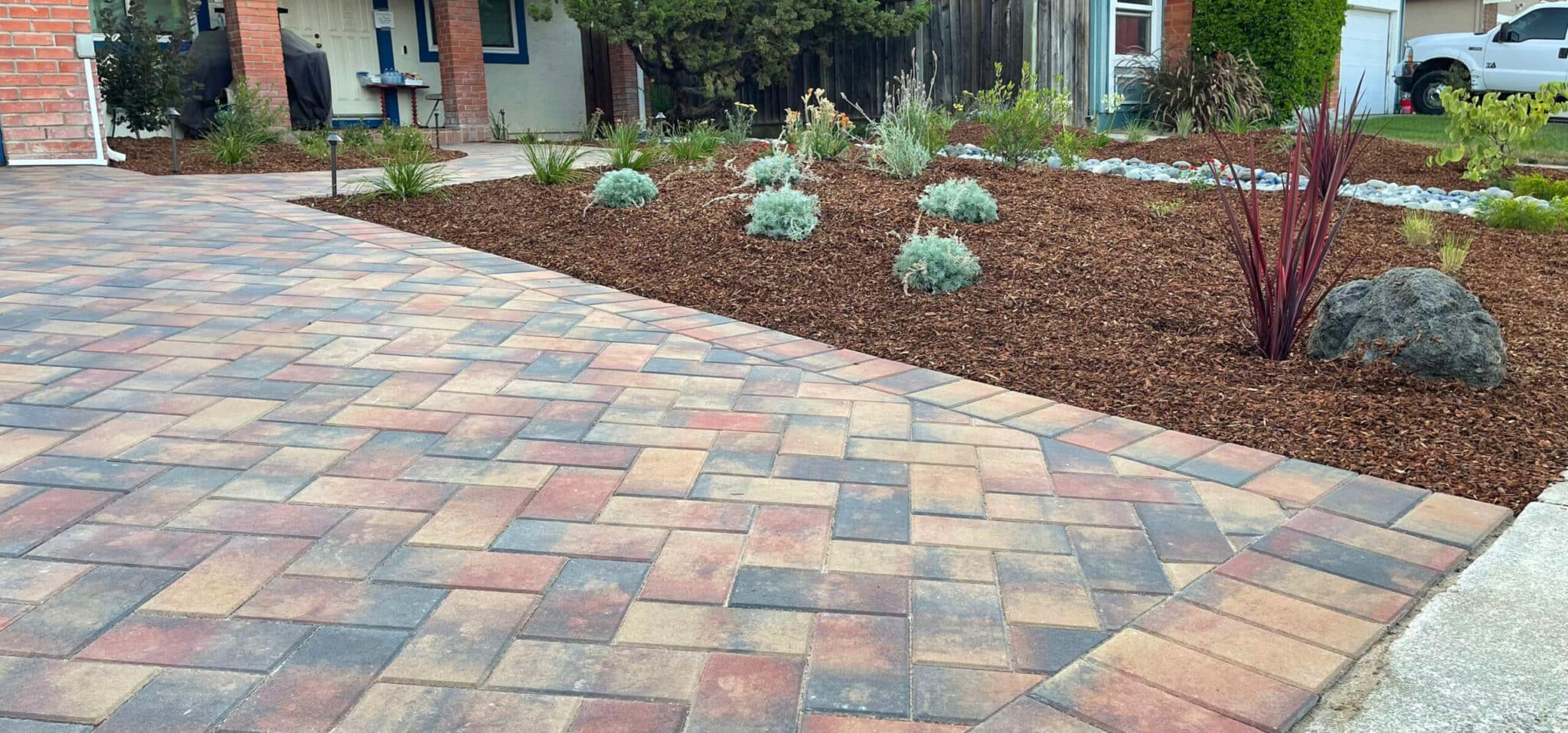
When it comes to upgrading your outdoor spaces, choosing the right material for your patio, driveway, or walkway is crucial. Among the most popular choices are pavers or concrete. Each material offers unique benefits and drawbacks, making the decision often challenging. In this comprehensive guide, we’ll delve into the differences between pavers vs concrete, exploring their pros and cons to help you make an informed choice for your home.
Understanding the Basics: Concrete Vs Pavers
Before diving into the comparison, it’s essential to understand what pavers and concrete are and how they are used in landscaping and hardscaping projects.
What Is Concrete?
Concrete, on the other hand, is a mixture of cement, sand, gravel, and water that hardens to form a solid, durable surface. It can be poured and shaped into almost any form, making it a versatile option for many applications. Concrete is often used for driveways, sidewalks, patios, and foundation slabs.
What Are Pavers?
Pavers are individual units made from materials such as brick, stone, or concrete that are interlocked to create a hard surface. They come in various shapes, sizes, colors, and patterns, allowing for a high degree of customization. Pavers are typically used for driveways, walkways, patios, and pool decks.
Pros and Cons of Concrete
Pros
- Cost-Effective: Concrete is often more affordable than pavers, making it a popular choice for large surfaces like driveways and patios. The lower material cost and simpler installation process contribute to its cost-effectiveness.
- Smooth Surface: Concrete provides a smooth, continuous surface that is ideal for activities like rollerblading or playing basketball. This can be a significant advantage for families with children.
- Customizable: While often thought of as a plain, gray material, concrete can be customized in various ways. Stamped concrete can mimic the look of brick or stone, and colored concrete can add a vibrant touch to your outdoor space.
- Low Maintenance: Concrete surfaces are relatively low maintenance. They require occasional sealing to protect against stains and weathering, but overall, they demand less attention than pavers.
Cons
- Susceptibility to Cracking: Concrete is prone to cracking, especially in areas with extreme temperature fluctuations. Once a crack forms, it can be challenging and costly to repair without replacing the entire slab.
- Limited Aesthetic Options: Although decorative options are available, concrete generally offers fewer design choices compared to pavers. This can be a limitation for homeowners seeking a highly customized look.
- Slippery When Wet: Concrete can become slippery when wet, posing a safety hazard. Textured finishes can help mitigate this issue, but it’s an important consideration for outdoor areas prone to moisture.
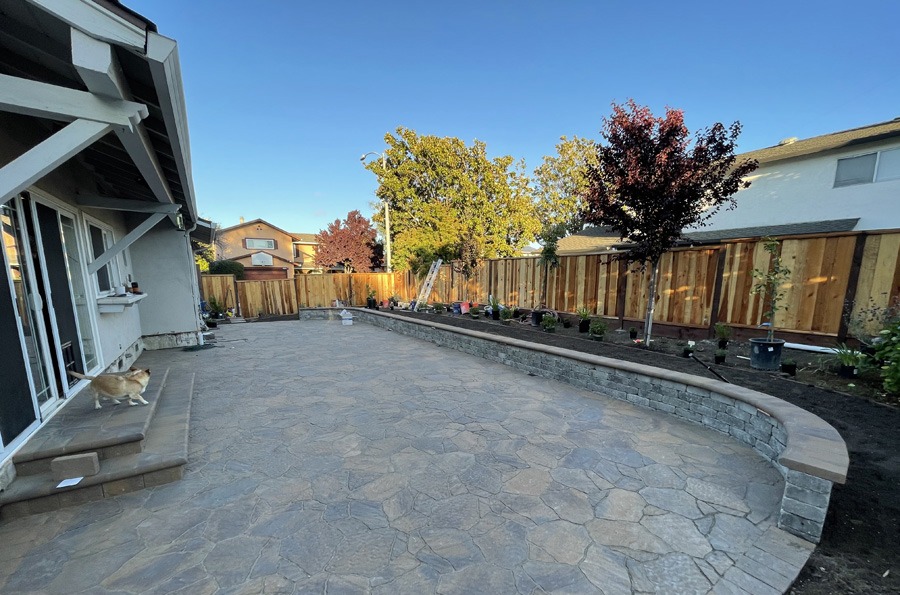
Pros and Cons of Pavers
Pros
- Durability and Flexibility: Pavers are highly durable and can last for decades with proper maintenance. Their individual units allow for flexibility, making them less susceptible to cracking from ground movement or heavy loads.
- Aesthetic Variety: Pavers come in a wide range of shapes, colors, and materials, providing endless design possibilities. Whether you prefer a classic cobblestone look or a sleek, modern design, there is a paver style to match your aesthetic vision.
- Easy Repairs: If a paver becomes damaged, it can be easily replaced without disturbing the surrounding area. This makes paver repairs simple and cost-effective.
- Permeability: Certain types of pavers, such as permeable pavers, allow water to pass through the surface, reducing runoff and promoting groundwater recharge. This can be particularly beneficial for eco-conscious homeowners.
Cons
- Higher Initial Cost: Pavers generally have a higher upfront cost compared to concrete. The material itself can be more expensive, and the installation process is more labor-intensive, adding to the overall expense.
- Potential for Shifting: Without proper installation, pavers can shift or become uneven over time. This is usually due to poor base preparation or inadequate edge restraints.
Pavers vs. Concrete: Key Considerations
When deciding between pavers and concrete, several factors should be taken into account:
Climate and Weather Conditions
In regions with severe weather conditions, such as freezing and thawing cycles, pavers are often the better choice due to their flexibility and resistance to cracking. Conversely, in milder climates, concrete may perform just as well and offer a more budget-friendly option.
Installation Time and Process
Paver installation is more time-consuming and labor-intensive, requiring careful preparation and placement of each unit. Concrete, on the other hand, can be poured and finished relatively quickly, making it a faster solution for large projects.
Maintenance and Longevity
While both materials can last for many years with proper care, pavers typically require more maintenance to keep weeds and moss at bay. However, their easy repair process can extend their lifespan significantly. Concrete requires less frequent maintenance but can be more challenging to repair when damage occurs.
Looking to Install Pavers? Contact Opulands Today
When it comes to the debate of pavers vs concrete, there is no one-size-fits-all answer. Both materials have their advantages and disadvantages, and the best choice depends on your specific needs, preferences, and budget.
However, if you are looking for a versatile, durable, and aesthetically pleasing option, pavers might be the ideal choice for your project. At Opulands, we specialize in designing and installing custom driveway, walkway, and patio paver solutions throughout the Bay Area. Our team of experts is adept at creating beautiful, unique patterns that enhance the visual appeal of your outdoor space while providing the durability and functionality you need.
If you live in or around the Bay Area and are looking to revitalize your front yard or backyard with high-quality pavers, contact us today to discuss your project or to learn more about our services. Let Opulands bring your vision to life with our exceptional landscaping and hardscaping solutions, tailored to meet your specific needs and preferences.
FAQs
Yes, but consider a smaller, more manageable patch of grass or opt for artificial turf for lower maintenance and water usage. Ground cover plants like creeping thyme or dwarf mondo grass can also serve as beautiful, low-maintenance alternatives to traditional lawns. In addition, there are the no-mow lawns offered by delta blue grass https://www.deltabluegrass.com. No mow lawns are lovely designer like taller grasses that create habitat for pollinators and require only occasional mowing while needing much less watering.

